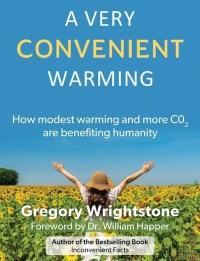 The following article is reprinted with permission. Visit Coleman’s Corner for more articles, posts, and information.
The following article is reprinted with permission. Visit Coleman’s Corner for more articles, posts, and information.
The key players are now all in place in Washington and state governments across America to officially label carbon dioxide as a pollutant and enact laws that tax us citizens for our carbon footprints. Only two details stand in the way: the faltering economic times and a dramatic turn toward a colder climate.
The last two bitter winters have led to a rise in public awareness that there is no runaway global warming. A majority of American citizens are now becoming skeptical of the claim that our carbon footprints, resulting from our use of fossil fuels, are going to lead to climatic calamities. But governments are not yet listening to the citizens.
How did we ever get to this point where bad science is driving big government to punish the citizens for living the good life that fossil fuels provide for us?
The story begins with an Oceanographer named Roger Revelle. He served with the Navy in World War II. After the war, he became the Director of the Scripps Oceanographic Institute in La Jolla in San Diego, California. Revelle obtained major funding from the Navy to do measurements and research on the ocean around the Pacific Atolls where the US military was conducting post-war atomic bomb tests.
He greatly expanded the Institute’s areas of interest and among others hired Hans Suess, a noted Chemist from the University of Chicago. Suess was very interested in the traces of carbon in the environment from the burning of fossil fuels. Revelle co-authored a scientific paper with Suess in 1957—a paper that raised the possibility that atmospheric carbon dioxide might be creating a greenhouse effect and causing atmospheric warming. The thrust of the paper was a plea for funding for more studies. Funding, frankly, is where Revelle’s mind was most of the time.
Next Revelle hired a Geochemist named David Keeling to devise a way to measure the atmospheric content of Carbon dioxide. In 1958 Keeling published his first paper showing the increase in carbon dioxide in the atmosphere and linking the increase to the burning of fossil fuels. These two research papers became the bedrock of the science of global warming, even though they offered no proof that carbon dioxide was a greenhouse gas. In addition, they failed to explain how this trace gas, only a tiny fraction of the atmosphere, could have any significant impact on temperatures.
Back in the 1950s, when this was going on, our cities were entrapped in a pall of pollution left by the crude internal combustion engines and poorly refined gasoline that powered cars and trucks back then, and from the uncontrolled emissions from power plants and factories. There was a valid and serious concern about the health consequences of this pollution. As a result, a strong environmental movement was developed to demand action.
The government heard that outcry and set new environmental standards. Scientists and engineers came to the rescue. New reformulated fuels were developed, as were new high-tech, computer-controlled, fuel injection engines and catalytic converters. By the mid-seventies cars were no longer significant polluters, emitting only some carbon dioxide and water vapor from their tailpipes. New fuel processing and smoke stack scrubbers were added to industrial and power plants and their emissions were greatly reduced as well.
But an environmental movement had been established and its funding and very existence depended on having a continuing crisis issue. Roger Revelle’s research at the Scripps Institute had tricked a wave of scientific inquiry. So the concept of uncontrollable atmospheric warming from the increase in atmospheric carbon dioxide from the burning of fossil fuels became the cornerstone issue of the environmental movement. Automobiles and power planets became the prime targets.
Revelle and Keeling used this new alarmism to keep their funding growing. Other researchers with environmental motivations and a hunger for funding saw this developing and climbed aboard as well. The research grants flowed and alarming hypotheses began to show up everywhere.





